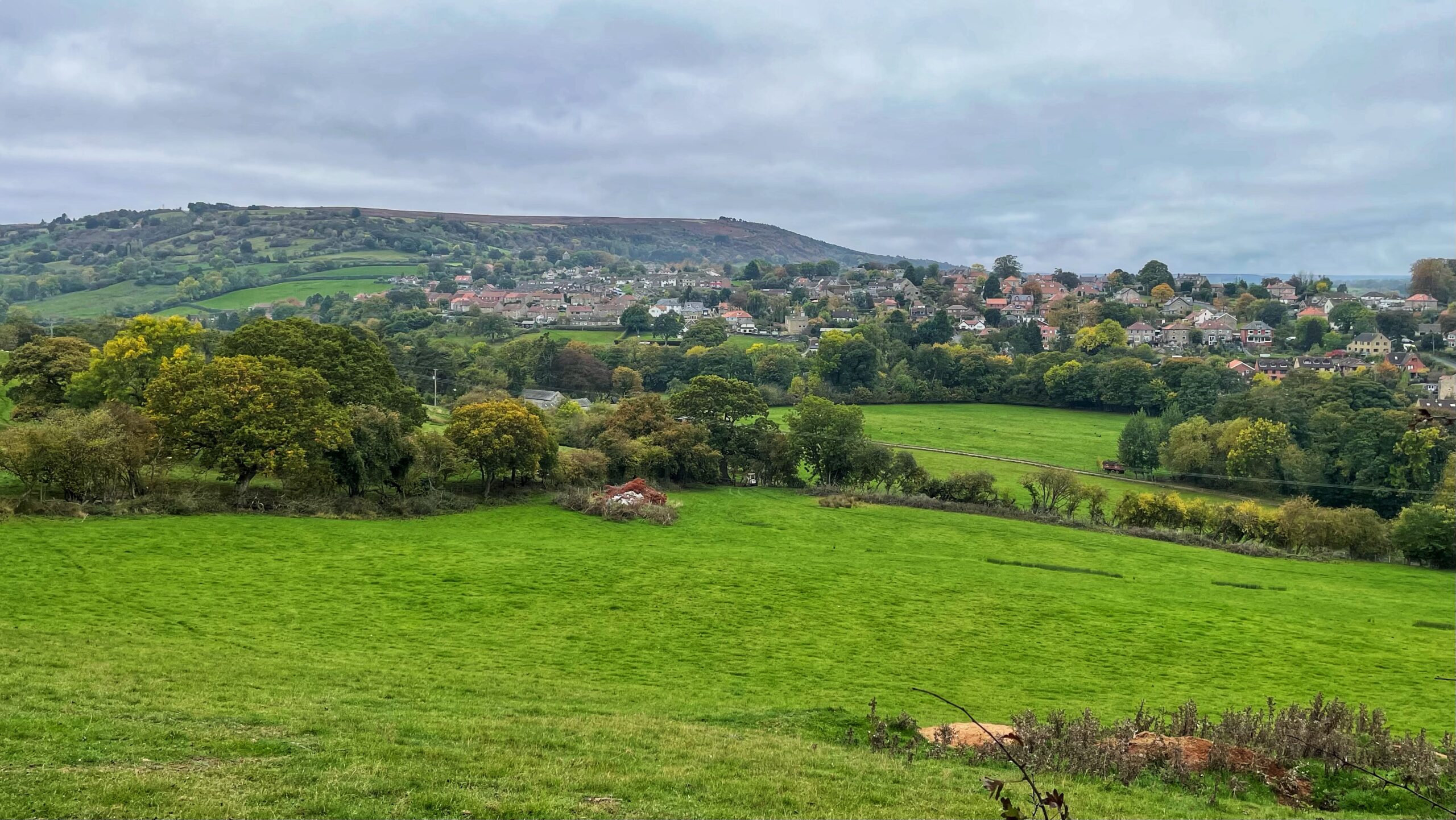Once upon a time, Sleights must have seemed the very picture of rural contentment: a quiet, respectable village where weary visitors might escape the clamour of industrial England amid green hills and fresh air. It was, one suspects, precisely the sort of place where Whitby’s prosperous merchants might choose to end their days, away from the bustle of the harbour and the smell of fish.
Yet to reach Whitby and this supposed idyll from the south, one first had to survive the descent of the infamous Blue Bank. Victorian travellers approaching from Pickering would have crossed miles of open moorland, only to be faced with a road that appeared to drop straight into the valley below. With an average gradient of nearly ten per cent and stretches approaching twice that, it was less a road and more an act of faith. Even today, with power steering and anti-lock brakes, it feels perilous enough. One can only imagine what it was like for horse-drawn wagons, their wheels locked and smoking, or for packmen inching their way down in wind and sleet, the weight of their trade pulling them towards disaster. In winter, the route was little short of suicidal.
By 1989, modernity finally caught up with Blue Bank. A new “arrester bed” was built — a strip of gravel designed to halt runaway vehicles. Within months, it had proved its worth when a heavy goods lorry lost control and ploughed into it, stopping short of the main street of Sleights. The incident came not long after an inquest into a fatal collision on the same hill. Progress, as ever, came a little too late1Whitby Gazette – 07 July 1989. Sleights is now a safer place. https://www.britishnewspaperarchive.co.uk/viewer/bl/0001103/19890707/013/0002.
Yet no event seared itself into local memory quite like the catastrophe of July 1929. Three buses belonging to the East Riding Motor Company were travelling in convoy towards Whitby, each packed with day-trippers from the Hull British Legion. As they began the descent, the driver of the lead bus glanced into his mirror — and saw the second vehicle hurtling towards him at alarming speed. Its brakes had failed2Leeds Mercury – 31 August 1929. 4 VICTIMS OF BLUE BANK CRASH. https://www.britishnewspaperarchive.co.uk/viewer/bl/0000748/19290831/033/0003.
The driver of the doomed bus steered desperately into the opposite lane, somehow avoiding the first bus and an oncoming car. But there were more vehicles ahead, and with the gradient steepening, his options vanished. The bus struck a wall and somersaulted twice before coming to rest beside a cottage where an unsuspecting family were eating their lunch. In a darkly absurd twist, it demolished several beehives in the process, unleashing a furious swarm upon rescuers and victims alike. Six passengers ultimately lost their lives, while many others were injured. The driver survived, later declared blameless — his quick thinking had averted an even greater calamity. Yet the legend that followed was stranger still: some claimed that the bees had stung passengers to death3The tragedy of Blue Bank. The Countryman’s Daughter. https://countrymansdaughter.com/2020/03/22/the-tragedy-of-blue-bank/ [Accessed 14 October 25].
For years afterwards, the tragedy lingered in local folklore. There is a story of a phantom bus thundering down Blue Bank, its engineless roar echoing through the night — a spectral warning from 1929. These tales, once traded in the snug of the Plough Inn and passed from grandfathers to grandchildren, have faded with time. Today, drivers glide down the bank with barely a thought, lulled by smooth tarmac and crash barriers into a sense of safety that may be as treacherous as the slope itself. The ghosts of Blue Bank no longer rattle their chains, yet their silence may be the greater danger — for nothing invites disaster quite like the belief that it can no longer happen.
- 1Whitby Gazette – 07 July 1989. Sleights is now a safer place. https://www.britishnewspaperarchive.co.uk/viewer/bl/0001103/19890707/013/0002
- 2Leeds Mercury – 31 August 1929. 4 VICTIMS OF BLUE BANK CRASH. https://www.britishnewspaperarchive.co.uk/viewer/bl/0000748/19290831/033/0003
- 3The tragedy of Blue Bank. The Countryman’s Daughter. https://countrymansdaughter.com/2020/03/22/the-tragedy-of-blue-bank/ [Accessed 14 October 25]

Leave a Reply